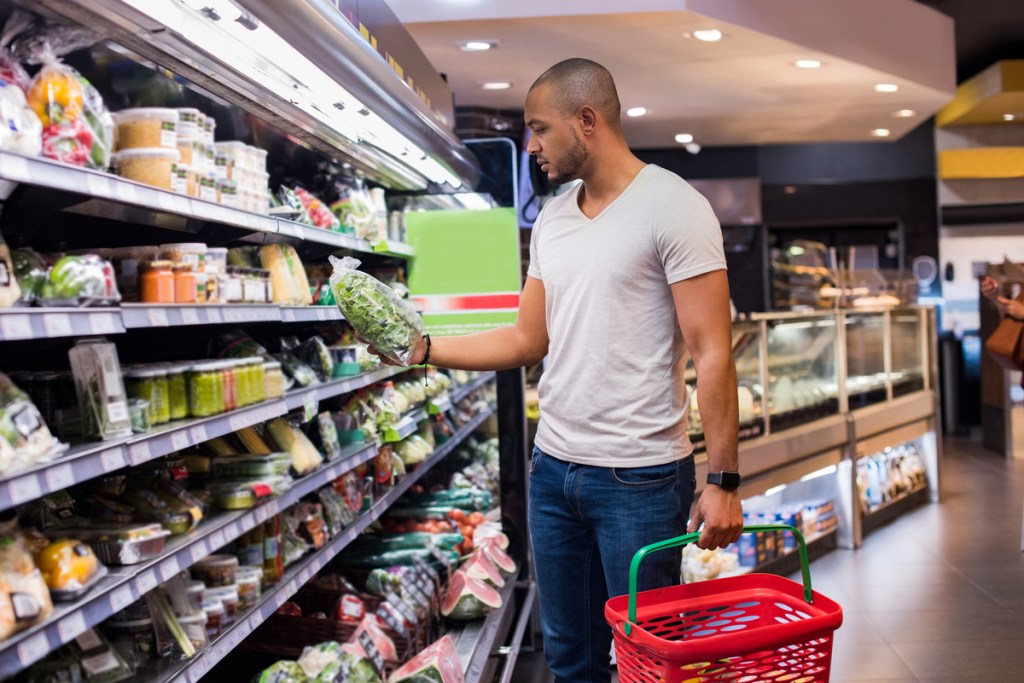Insulated and constrained shoppers
It’s a new year, but many Americans find themselves facing the same decisions and challenges as past years according to NielsenIQ’s Consumer Outlook 2022 survey.
When asked about expected behavior changes and shifting priorities related to rising inflation, financial security, physical and mental wellness, and lifestyle changes, it’s clear that consumers remain divided in their spending intentions based on the direct financial and health impact of COVID-19 on their lives.
The convergence of these factors indicates the Insulated and Constrained shopper groups first observed in 2020 will continue to operate with distinct needs. Meanwhile, consumer goods companies must continue to battle supply chain disruptions, low inventory, and inflationary pressures while managing the continued shift to omnichannel shopping.
The pressure of rising prices
According to the U.S. Bureau of Labor Statistics, the Consumer Price Index rose 7.5% from January 2021 to January 2022—the largest hike in more than 40 years. The price of an average basket of groceries increased 7.4%—the highest increase since the Great Recession of 2008. Inflation is a prominent topic from boardrooms to television networks, and managing a brand’s pricing strategy deserves full attention this year as more than 60% of Americans are paying close attention to the rising price of their groceries.
To combat the strain on wallets, nearly a quarter of Americans intend to either switch to the private label brand or buy the lowest priced item in the category set. It’s a move that many predicted at the onset of the pandemic. Categories with a high degree of substitution or established private label lines will likely experience the most shift. Private label share in categories like milk, frozen seafood, and bottled water has consistently climbed in the past three years and outpaced overall private label growth.
However, private label won’t always be the lowest priced option available. A well- developed promotional strategy could entice cost-conscious shoppers to switch. With the continued inventory challenges and spike in out-of-stock items, shoppers have shown they are increasingly brand disloyal—a concept explored even before COVID-19 wreaked havoc on supply chains.
What about the remaining Americans who either haven’t noticed a change in prices or are not changing their purchases as result? There’s more grace in passing along price increases for premium or specialty categories that satisfy a specific need within these groups. For example, categories like kombucha, oat milk, and vegan yogurt posted record sales in the last year.
But remember that price doesn’t have to be the end-all-be-all if a product delivers a unique value for the shopper.
The expanded focus on personal wellness
Health and wellness has transformed from a niche market focused on organic varieties to a $175 billion mainstream powerhouse, and NielsenIQ projects another $30 billion in growth by the end of 2023. The past two years have shined a spotlight on mental and physical wellness, and the majority of Americans remain committed to the habits they’ve formed and lifestyle changes they’ve implemented that support greater personal wellness.
The concept of wellness has evolved and the impact extends to every shelf of the store. From the foods we feed our families and pets, to the items used on our bodies and in our homes, American shoppers are hungry for products that meet their personal wellness needs. The onus is on companies to deliver.
Companies without a wellness strategy will fall behind in 2022. Shoppers are scrutinizing every aspect of the brands they purchase: ingredients, sourcing practices, environmental impact, nutrients, and functional benefits. And while consumers are still reading labels and packaging claims, the rise of online shopping makes it easier for consumers to search for exactly what he or she needs—or at least it should. In our survey, 44% of shoppers indicated they had difficulty identifying specific attributes on online product descriptions. Furthermore, a NielsenIQ audit of 21 retailers last year found that 80% of consumers’ needs and preferences were overlooked, leaving billions of dollars on the table in unfulfilled purchases.
Winning brands have a consistent pulse on changing and emerging wellness trends, focus on winning a specific segment of the wellness market, optimize product performance with proper on-package claims and online descriptions that convey relevant wellness information, and have an innovation pipeline ready to tackle the next opportunity.
Managing out of stocks in an omnichannel world
Empty shelves cost U.S. retailers $82 billion in missed sales last year. Continued uncertainty about easing supply chain congestion and thus more consistent product availability continues to frustrate many Americans. One in four said they now pantry load on favorite items to avoid being impacted by out-of-stocks.
While this sounds like great news for brands, it throws past inventory management principles and planning out the window. It also limits the opportunity to convert trial purchases from new shoppers if brand loyalists have cleaned out the shelves. For retailers, it can have even more detrimental consequences if the out-of-stock leads to an erosion of total basket sales should a shopper abandon the entire shopping trip.
Underpinning this challenge is the continued shift to omnichannel shopping. Many people predicted that shoppers would revert to old habits as the pandemic waned. In the case of online shopping, that never happened – at least not for the masses. The growth may have slowed from the unprecedented rate of 2020, but the importance and impact on consumer goods sales has climbed with 85% of shoppers buying across online and instore channels today.
Inventory management across digital and physical stores needs to be more precise than ever. Retailers need to link item availability, and update in real time, between physical and digital platforms. With the explosion of in-store pick up or delivery courtesy of third parties like Instacart, consumers want to know that the items selected in their shopping cart will be delivered.
As Covid fatigue spreads and hope transpires for a transition to the endemic phase, American behavior could fluctuate later this year. It’s important that companies remain flexible with strategies to embrace any shifts in spending patterns, but one thing is clear: financial and wellness concerns will have a significant impact on spending this year. Companies with a deep understanding of their core shopper’s needs—both met and unmet—will win the shelf in 2022.





